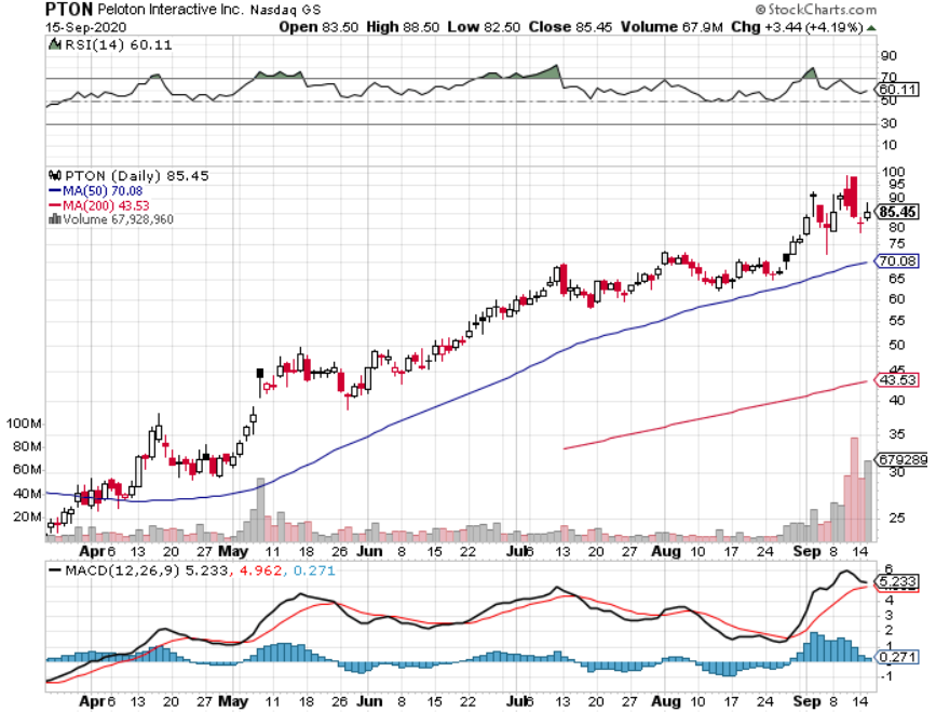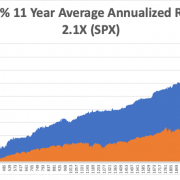Peloton (PTON) is a tech company I once hated, but that is now undergoing a renaissance because the pandemic has created a surge in demand for home exercise solutions.
In its most recent earnings report, revenue frothed to 172% to $607.1 million, crushing both the consensus estimate of $580 million and the company's own guidance.
Connected Fitness subscribers more than doubled to 1.09 million, and Digital memberships more than tripled to nearly 320,000.
Peloton quite simply is struggling to keep up with demand, like many other winners in the shelter-at-home tech trade.
Peloton has been pedal to the metal expanding manufacturing capacity at third-party contract manufacturers and its in-house manufacturing operations.
Peloton had acquired Tonic, one of its bike manufacturers, a little less than a year ago as part of a vertical integration pivot.
CEO John Foley also noted that the company had to balance the trade-offs with how it allocated capacity.
Peloton recently introduced a new Tread that's more affordable, but it also needed to ramp unit volume.
Foley commented, "While we had hoped to launch our new Tread more quickly and in greater supply, we had to make some tough decisions regarding supply chain resource allocation due to the surge in demand we've been experiencing for our Bike."
Connected Fitness subscriber growth is starting to become constrained at the back half of the quarter, but that was largely due to ongoing supply constraints as opposed to a lack of demand.
The resurgence in coronavirus cases over the summer contributed to another spike in demand for the products so imagine what a winter spike could mean for the company too.
The flip side is that the surge in virus cases has made it challenging to meaningfully reduce order delivery time frames in the US.
Peloton has materially increased production capacity in recent months and continue to grow manufacturing capabilities, but do not expect a normalized order to delivery windows in the U.S. prior to the end of Q2 fiscal '21.
Peloton's financial performance for the rest of 2020 will center around its ability to ramp production in order to satisfy demand.
Conversely, some of the biggest losers in the economy are gyms, and Peloton is feasting on this opportunity.
It’s becoming clearer that connected fitness has a massive runway for growth, especially with over 180 million people around the globe that—prior to the health crisis —belonged to a gym.
Quarterly workouts surged to almost 77 million in the quarter. That’s 25 workouts per connected fitness subscription on average per month.
That is the differentiation that Peloton is myopically focused on because that leads to low churn, that leads to great word of mouth and, frankly, it’s what I believe has changed this category of fitness because there’s finally something that is sustainable and located in the safety of one’s house.
Workouts per subscription have basically doubled from a year ago due to improvements in digital content offerings across non-bike formats like strength training and yoga.
Another tailwind is the accessibility of that content on Roku, Fire TV, Apple TV, Android TV right at the touch screen of the Peloton Bike.
It’s almost as if the coronavirus saved this company and Peloton hasn’t looked back.
Although I was discouraged about Peloton before the pandemic, it appears like a rejuvenated company during the virus era.
Luck sometimes needs to fall on your side and trading pullbacks from the long side makes sense with Peloton right now.
Considering it achieved its first profitable quarter, this exercise-from-home revolution has legs, and incremental revenue gains are highly probable moving forward.
They were just a marginal tech company before, but although not a juggernaut, they have come closer to respectability which is saying a lot for Peloton.
Remember that daily volatility is high in Peloton, I would not hold it until the next crash. Sell for profits and wait for a pullback to get a lower cost basis. Rinse and repeat.




